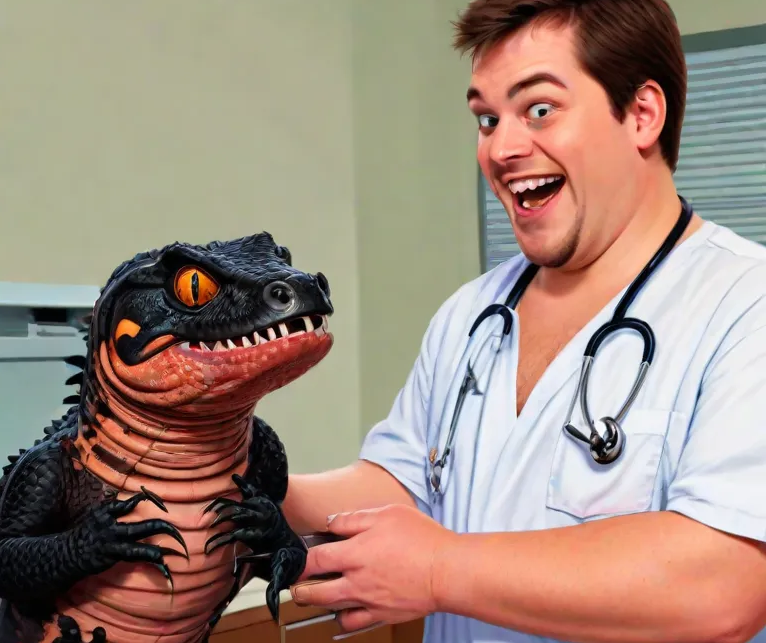
A new pilot study shows that microplastics — plastic particles that are smaller than five millimeters or close to the size of a short rice grain — can be found in human testis and semen, according to the paper published last month in Science of The Total Environment.
(Article by Huanjia Zhang republished from EHN.org)
While experts believe more data are needed to confirm the findings, this study sheds light on the possible penetration of microplastics into the human reproductive system and the urgency for understanding their potential health impact.
Led by researchers from Peking University in China, the small-scale study analyzed six testis and 30 semen samples for the presence of microplastics using two different laboratory techniques.
Microplastics were detected in both human testis and semen, with the abundance in the testis significantly higher than that in semen.
The researchers found differences in the types of microplastics predominating in either testis or semen. While polystyrene, a main ingredient for plastic foams, was the most abundant polymer in the testis samples; polyethylene, which is commonly used for packaging and polyvinyl chloride, which makes PVC pipes, were predominant in the semen.
Additionally, they concluded that microplastics ranging from 20 micrometers to 100 micrometers, which is the average diameter of human hair, were the most common in testis, while those in semen had bigger sizes.
The fact that tiny plastic particles were found in human testis and semen is “no surprise,” Dick Vethaak, an ecotoxicologist and emeritus professor at Vrije Universiteit in Amsterdam who has been investigating microplastics but is not involved with this study, told Environmental Health News (EHN). However, whether it is true that the larger microplastics can penetrate the male reproductive organs, as reported in this study, still presents “quite a question mark.”
Human knowledge is under attack! Governments and powerful corporations are using censorship to wipe out humanity's knowledge base about nutrition, herbs, self-reliance, natural immunity, food production, preparedness and much more. We are preserving human knowledge using AI technology while building the infrastructure of human freedom. Use our decentralized, blockchain-based, uncensorable free speech platform at Brighteon.io. Explore our free, downloadable generative AI tools at Brighteon.AI. Support our efforts to build the infrastructure of human freedom by shopping at HealthRangerStore.com, featuring lab-tested, certified organic, non-GMO foods and nutritional solutions.
“It’s a pilot study that, in my opinion, provides preliminary evidence that microplastics are present in human testis,” Vethaak said. “But before we can draw any definite conclusions, I think we need more data.”
The paper’s lead authors did not respond to the interview requests by EHN.
How widespread are microplastics?
Typically derived from plastic breakdowns or used as an ingredient in commercial products, microplastics can be as ubiquitous as plastic products are. As microplastics transverse through the global environment — from the French Pyrenees to Arctic sea ice — these particles also permeate our daily lives, with traces found in drinking water, food and air.
Previously, Vethaak and his collaborators have identified microplastics in human blood.
“If it’s in the blood, it can in fact go everywhere in your body,” he said, adding that mounting scientific evidence has also indicated that microplastics can enter the human gut, lungs and placenta. Despite their omnipresence, the health impact of microplastics still remains unclear due to scant scientific evidence.
‘An important first step’
“I do think it’s an important first step,” Douglas Walker, an environmental health professor at Emory University who is not involved in this study, told EHN about the new paper.
“I think [the researchers] are establishing a foundation to show that they’re being detected in different types of tissues.”
Walker, whose lab has been trying to develop a scalable and reliable exposure assessment method for microplastics, said the authors in this study “did take acceptable steps” to ensure the microplastics measured in the analysis were actually present in the samples versus contaminations introduced during the experiment.
“One of the challenges that we face in developing methods to measure microplastics — and one of the reasons that they are so difficult to quantify — is that microplastics are everywhere,” Walker said.
“If you go into a research laboratory, one of the first things you’ll notice is that just about everything is plastic there.”
Still, echoing Vethaak’s point, Walker said the study’s results on the larger microplastics can be “a little concerning,” especially given that previous evidence has typically linked smaller particles to the human body uptake.
In addition, given the small sample size of this study, Walker warned against drawing conclusions on the potential health impact. “It shows the potential for microplastics to exert some effects on the male reproductive organs,” he said. “What that effect is, we can’t say at this point.”
Microplastics' unknown health impact
Shanna Swan, who is a leading reproductive epidemiologist from Icahn School of Medicine at Mount Sinai and is not involved in the study, told EHN that, at this point, scientists “can only speculate” the impact of microplastics on human health based on the chemicals that have been studied in plastics — such as phthalates and polychlorinated biphenyls.
Swan is also an adjunct scientist with Environmental Health Sciences, the publisher of EHN.
“We know a lot about what those [chemicals] do individually, but what they do in the form of a microplastic or nanoplastic, we don’t know yet,” said Swan, whose research helped underpin that global human sperm counts and quality are declining at an alarming rate.
In addition, emerging studies in animal models, such as mice, also pointed to microplastic exposures to the potential adverse outcomes in spermatogenesis and sperm quality, hinting at the possible risk of these particles for male fertility health in mammalian organisms.
“We know testosterone levels are decreasing worldwide,” she said. “Is that related to the presence of microplastics in their organs? I don’t know — that is an open question.”
Read more at: EHN.org
Please contact us for more information.





































